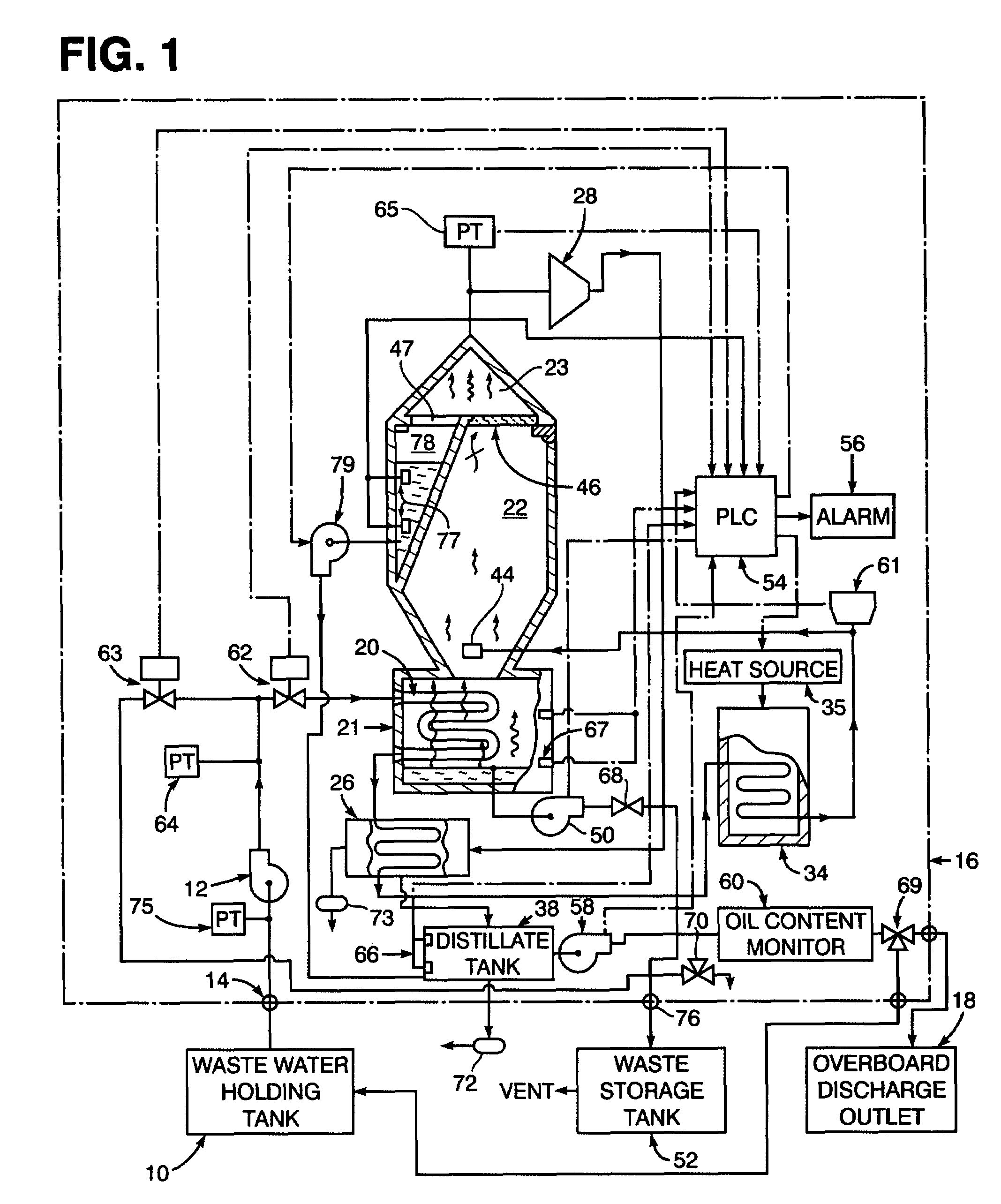Processing of shipboard wastewater
a technology for processing wastewater and marine vessels, applied in vessel construction, vacuum distillation separation, separation processes, etc., can solve the problems of high fouling rate and achieve the effect of enhancing subsequent flashing
- Summary
- Abstract
- Description
- Claims
- Application Information
AI Technical Summary
Benefits of technology
Problems solved by technology
Method used
Image
Examples
Embodiment Construction
[0009]Referring now to the drawing FIG. 1 in detail, it diagrams a shipboard system for processing wastewater such as bilgewater or graywater received from a source such as a wastewater holding tank 10. According to the embodiment illustrated, the wastewater from the holding tank 10 is initially received through an inlet 14 into an inflow pump 12 for pressurization within a processor, generally referred to by reference numeral 16, from which an oil-free or contaminant free water condensate is obtained for overboard discharge through an outlet 18.
[0010]The wastewater from holding tank 10 after pressurization by pump 12 passes through a heat absorbing coil 20 located within a bottom section 21 of a flash chamber 22 in the processor 16. Heat from water vapor in the bottom section 21 is absorbed by the wastewater within the coil 20 before it is supplied to a condenser 26. The water vapor rising from the bottom section 21 when reaching an upper chamber section 23 of the flash chamber 22 ...
PUM
 Login to View More
Login to View More Abstract
Description
Claims
Application Information
 Login to View More
Login to View More - R&D
- Intellectual Property
- Life Sciences
- Materials
- Tech Scout
- Unparalleled Data Quality
- Higher Quality Content
- 60% Fewer Hallucinations
Browse by: Latest US Patents, China's latest patents, Technical Efficacy Thesaurus, Application Domain, Technology Topic, Popular Technical Reports.
© 2025 PatSnap. All rights reserved.Legal|Privacy policy|Modern Slavery Act Transparency Statement|Sitemap|About US| Contact US: help@patsnap.com


